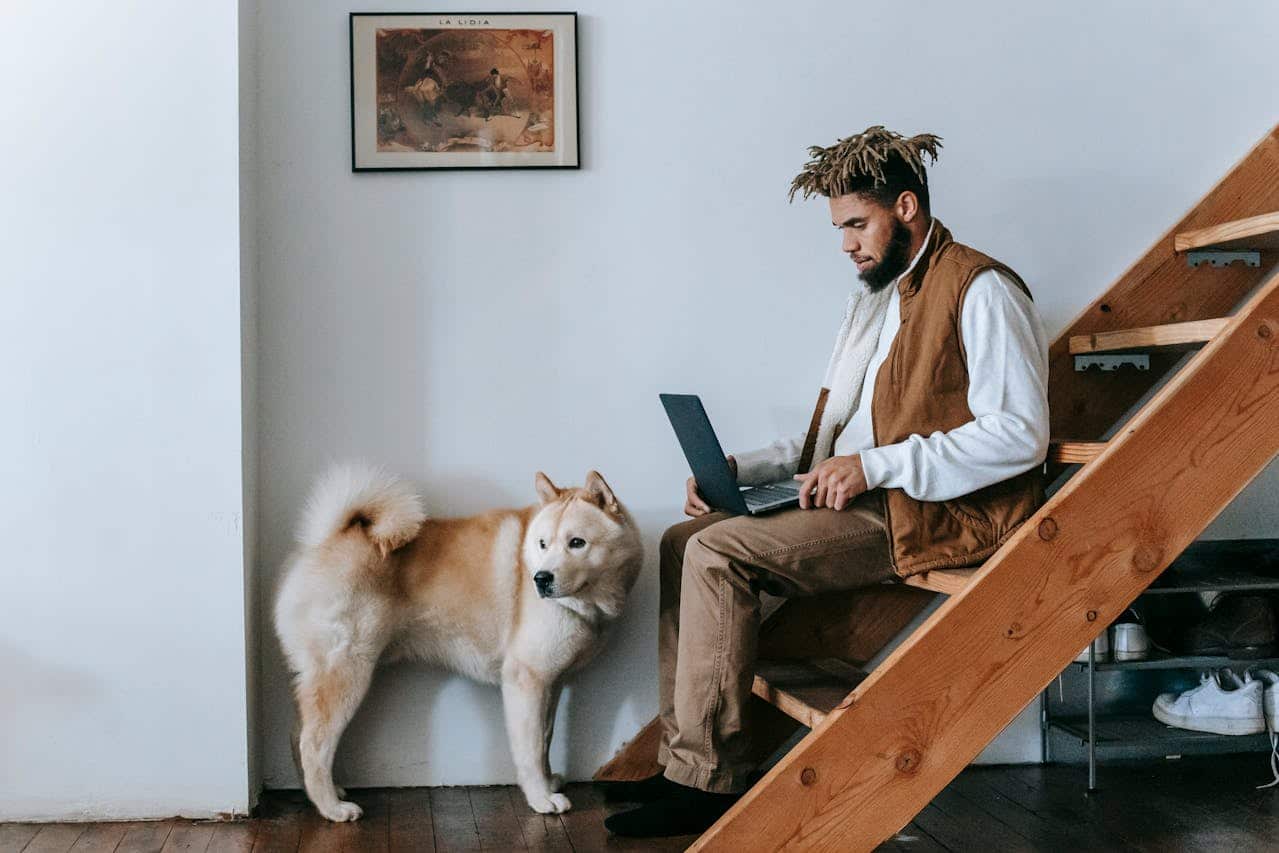Have you ever stumbled upon a piece of art online and thought, “Wow, this would make an amazing NFT”? Hold that thought, because diving into the world of Non-Fungible Tokens (NFTs) is like stepping into a legal minefield blindfolded, especially when it comes to intellectual property (IP) rights.
Let’s unravel this together, shall we? But before we get our shovels out, let’s understand that in this burgeoning digital frontier, where creativity meets technology, the rules are not just written in fine print—they’re being written in real-time.
As artists and collectors navigate this new territory, the question of how to protect one’s creative output while embracing the transformative potential of NFTs looms large. From the shadows of copyright disputes to the bright future of blockchain technology, join me on a journey to demystify the legal landscape of the digital art world.
IMAGE: PEXELS
The Wild West of Digital Art
Imagine the internet as the Wild West, a vast expanse of unclaimed land ripe for the taking. In this analogy, NFTs are the gold mines, and everyone—from artists to opportunists—is rushing to stake their claim. But here’s the interesting part: unlike the tangible art world, where copyright and trademark laws are clear-cut, the NFT market is still a bit of a legal grey area.
It’s this uncharted territory that beckons the brave and the bold, yet also hides snakes in its grass. Navigating it requires not just creativity and innovation but a keen legal acumen. As pioneers in this digital frontier, the challenge isn’t just about finding treasure, but doing so in a way that respects the claims of others.
This wild, untamed landscape of digital art is exhilarating for its boundless opportunities, yet daunting for its legal complexities, making every discovery and creation an adventure fraught with both promise and peril.
A Quick Dive into Copyright and Trademark
Copyright protects original works of authorship, including paintings, photographs, and digital art. Trademarks protect symbols, names, and slogans used to identify goods or services. Now, when you mint an NFT, you’re not just selling a digital file; you’re selling a unique, blockchain-verified token associated with that file.
But does the buyer also acquire the copyright or trademark rights to the artwork? Not necessarily. This distinction is crucial because it highlights a common misconception in the NFT world: ownership of a token does not equate to ownership of the underlying IP.
This means that while you may own a digital asset, your rights to reproduce, distribute, or create derivative works from the original art are limited. Navigating these waters requires a deep understanding of both IP law and the technical nuances of NFTs, underscoring the need for clear agreements and copyright awareness among all parties involved.
The Plot Thickens: Recent Legal Cases
Take, for example, a recent case where a famous artist’s work was tokenized without their permission. The artist sued, arguing that the NFT creator infringed on their copyright. The court’s decision? Still pending, but it’s a clear sign that legal battles over NFTs and IP rights are heating up.
This scenario is far from isolated. Across the globe, artists and creators are finding themselves in similar disputes, challenging the boundaries of copyright law as it intersects with the digital age. These cases not only test the limits of existing legal frameworks but also set precedents that could shape the future of digital art ownership and copyright.
As courts grapple with these issues, the outcomes will likely influence how NFTs are created, bought, and sold, making it an essential area of watch for anyone involved in the NFT ecosystem. The evolving nature of these legal battles underscores the dynamic interplay between innovation and regulation, offering a glimpse into the future challenges and opportunities that lie ahead.
From the Artist’s Perspective
Let’s take a step back and consider the artists and creators, the heart and soul of the NFT ecosystem. Many artists see NFTs as a revolutionary way to monetize their work and connect directly with collectors. However, the fear of having their work plagiarized and sold as NFTs without their consent is real and growing. So, what’s an artist to do?
Well, understanding the legal nuances and taking steps to protect their work is a start. Artists are increasingly seeking ways to safeguard their creations, from registering copyrights to embedding smart contracts that specify usage rights directly within their NFTs.
This proactive approach not only helps in protecting their intellectual property but also in educating buyers about the importance of respecting these rights. Yet, despite these efforts, the digital nature of NFTs makes enforcement challenging, leaving some artists feeling vulnerable in the face of potential misuse. As the dialogue between copyright law and digital innovation continues, artists are at the forefront, advocating for regulations that recognize and protect their work in the digital marketplace.
The Evolving Regulatory Framework
Governments and regulatory bodies are beginning to take notice, drafting guidelines and laws to protect IP rights in the digital space. But here’s the catch: the blockchain technology underpinning NFTs is designed to be decentralized and borderless, which complicates regulatory efforts.
As regulators scramble to catch up with the rapid pace of technological innovation, they face the challenge of imposing traditional legal frameworks onto a fundamentally new and global digital marketplace.
This dynamic creates a fascinating tension between innovation and regulation, with lawmakers working to balance the protection of IP rights against the ethos of decentralization that defines the blockchain. The question becomes how to craft laws that are both effective and flexible enough to adapt to the continuing evolution of technology without stifating creativity.
The efforts to regulate will undoubtedly shape the future landscape of NFTs, potentially influencing everything from how NFTs are created and traded to how IP is defined and protected in the digital age.
What Does This Mean for Us?
For collectors, investors, and creators in the NFT space, navigating the legal landscape requires diligence, research, and sometimes, legal counsel. It’s about understanding the risks, respecting IP rights, and being prepared to adapt to an evolving regulatory environment.
This landscape is not just a legal puzzle but a dynamic ecosystem where the rules of engagement are continually shifting. As we tread carefully, the importance of community in shaping norms and practices becomes evident. Engaging in open dialogues, sharing knowledge, and collectively advocating for fair practices can empower stakeholders to navigate these waters more effectively.
Moreover, this collaborative approach fosters a culture of respect and understanding that can help mitigate conflicts before they escalate into legal battles. Thus, while the legal aspects are crucial, the role of community engagement and education should not be underestimated in shaping a responsible and sustainable NFT market.
Real-world Examples and Hypothetical Scenarios
Imagine discovering an NFT collection that uses iconic movie characters. Exciting, right? But without the proper licensing agreements, such collections could be a lawsuit waiting to happen. On the flip side, consider an artist who successfully licenses their work for NFTs, creating a new revenue stream while maintaining control over their IP.
These scenarios highlight the importance of legal awareness in the NFT market. Now, picture a musician who decides to venture into NFTs, offering exclusive digital merchandise tied to their music. This innovative approach opens up new legal questions about copyright in music and how it intersects with NFTs.
Or imagine a digital artist who collaborates with a physical artist to create hybrid NFTs, blending digital and tangible art. These collaborations not only push the boundaries of creativity but also present unique challenges in defining and protecting joint IP rights.
Through these real-world and hypothetical examples, we see the vast possibilities and legal intricacies that come with the NFT territory, underscoring the need for clear guidelines and mutual respect among creators and collectors.
Engage and Reflect
Now, think about your own experiences. Have you ever considered the legal implications of buying, selling, or creating NFTs? What steps would you take to protect your rights or respect those of others in the NFT space? These questions aren’t just rhetorical—they invite you to dive deeper into your role within the NFT ecosystem.
Whether you’re an artist, collector, or casual observer, your perspective and actions contribute to the shaping of this new frontier. Reflecting on these questions can spark a personal journey of discovery and responsibility. How do you envision your place in the evolving narrative of NFTs?
Are there ethical considerations that weigh on your decisions? By pondering these aspects, you contribute to a larger conversation about the future of digital art and commerce, emphasizing the collective responsibility we share in nurturing an ecosystem that values creativity, fairness, and legal integrity.
Wrapping It Up
Navigating the NFT legal landscape is like charting a course through uncharted waters. It’s complex, evolving, and full of opportunities and pitfalls. By staying informed, respecting IP rights, and embracing the spirit of innovation, we can all play a part in shaping a fair and thriving NFT ecosystem.
So, as we circle back to our opening thought, remember that while the NFT gold rush is exciting, it’s the respect for intellectual property that will ultimately define its value and sustainability. What steps will you take to navigate this landscape wisely? Reflect on this as we conclude our journey through the NFT legal landscape, and consider sharing your thoughts or experiences with the community. Let’s keep the dialogue going.
IMAGE: PEXELS
If you are interested in even more business-related articles and information from us here at Notilizer, then we have a lot to choose from.


COMMENTS